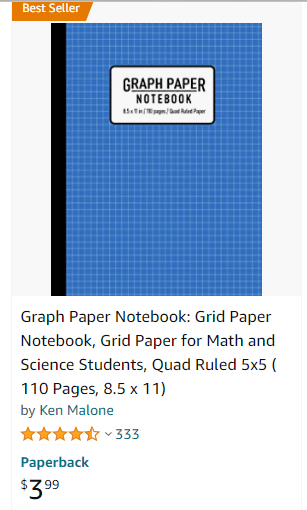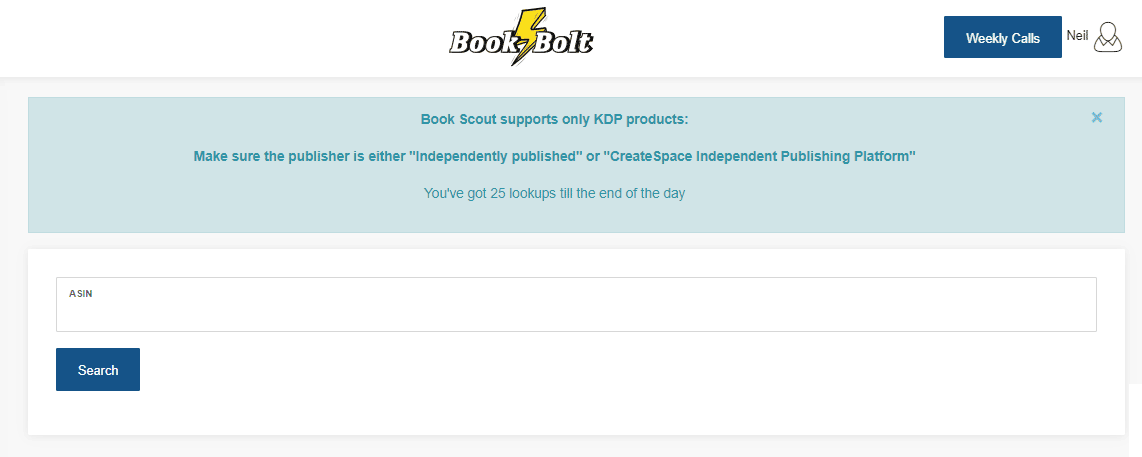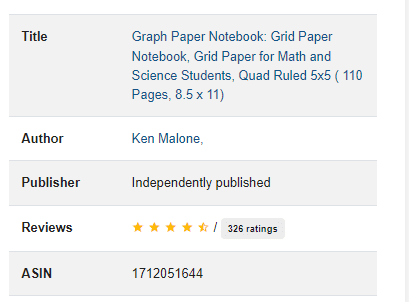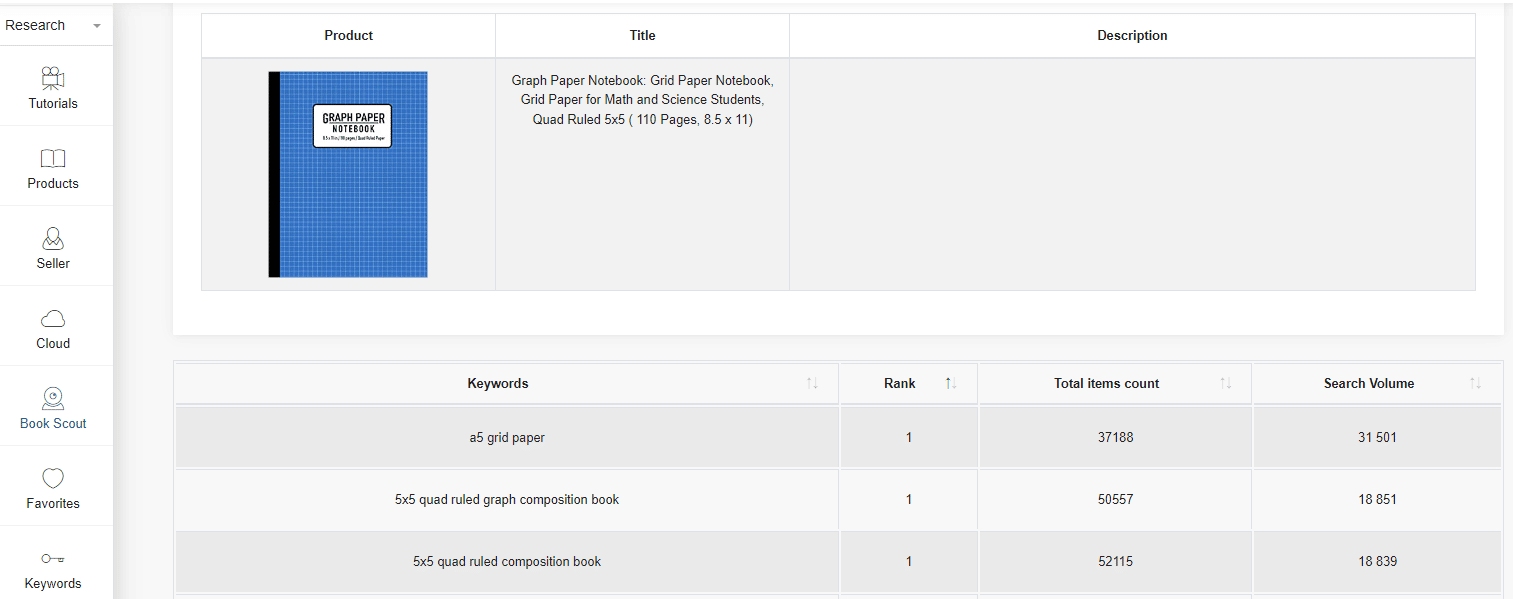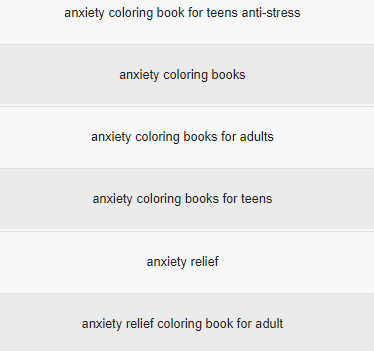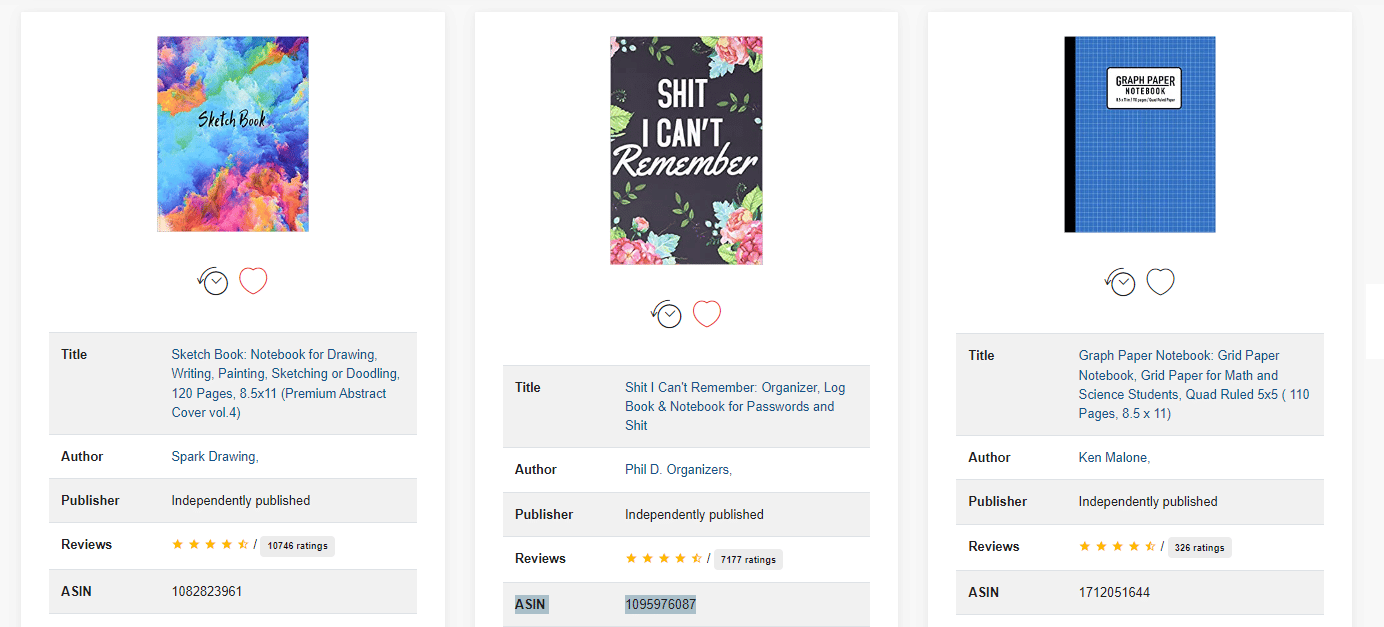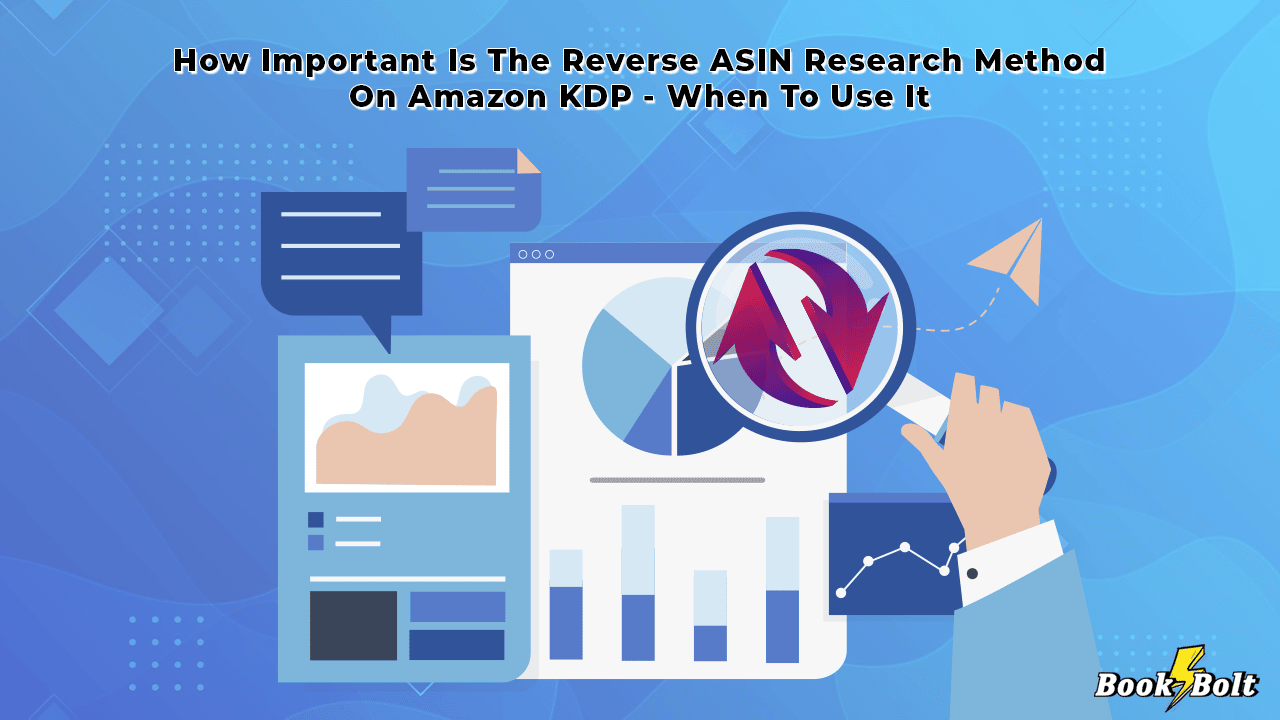
Imagine that you’re selling low-content or no-content books on Amazon KDP. You’re hunting for ways to grease the wheels of your sales and enjoy more royalties. You’ve already tried a few tactics to boost your traffic and exposure, but the results are far from your expectations. Naturally, you’re wondering what other Sellers are doing to attract buyers to their listings.
Luckily, there’s a way to find out. It’s called ASIN research.
What is ASIN research?
If you’re familiar with Amazon’s selling policies, chances are that you’re already familiar with the term ASIN. In short, ASIN stands for Amazon Standard Identification Number. It’s a unique identifier that consists of 10 letters and/or numbers. Every product on Amazon comes with an ASIN number. The objective behind the ASIN number is to help Sellers track product inventory, index catalog pages for Amazon search, and reference catalog data. However, it’s also useful for performing specific research.
You can discover the ASIN number for each Amazon product as part of its URL. Once you’ve discovered the ASIN number for a competitor’s product, you can search on Amazon by using the number directly. Amazon will instantly bring back the product whose ASIN you’ve inserted into the search box. The ASIN can also be found under the product description for each listing. Sometimes Amazon will use the ISBN number as the ASIN.
However, the real power of knowing a product’s ASIN lies in reverse ASIN research.
How to conduct a reverse ASIN search?
A reverse ASIN search empowers Sellers to peek into competitor products to discover what types of keywords they’re ranking for. Put simply, an ASIN search will enable you to see the Amazon pay-per-click keywords that your competitors are using to land sales. We’ll look at why you want to do this and what the rewards are in a bit. First, let’s see how you can perform an ASIN search in the first place.
ASIN reverse searches are not an option provided by Amazon. You’ll need to use an external tool to generate the insights that you’re after. Book Bolt offers a specifically designed feature for reverse ASIN searches called Book Scout.
Using Book Bolt to perform a reverse ASIN search
You can find Book Scout on the left-hand menu of your Book Bolt account. Once you click on it, you’ll notice a search box where you can directly input the ASIN of a competitor listing.
You can use an ASIN that you’ve extracted through Amazon browsing. However, you can also use the Book Cloud tool on Book Bolt. Choose a low-content book category that you’re interested in and run a search for the top Sellers in the space. Choose a listing that is similar to yours or you’re interested in and copy its ASIN number.
Make sure that the listing you’ve selected is “Independently Published” or published by the “CreateSpace Independent Publishing Platform”. It’s also important to note that Book Bolt’s reverse ASIN search tool only supports KDP products.
Paste the ASIN number into the Book Scout search box and give the tool a few seconds to load the results. The software will return information on the product listing, its title, and description. Best of all, it will show you all of the keywords that the Seller is ranking for the specific listing. In addition, you’ll be able to see how many other listings are using each keyword and how much monthly search volume it’s receiving.
But what does all of this mean for you as a Seller? How can it impact your profitability?
How can a reverse ASIN search impact your profitability on Amazon KDP?
A reverse ASIN lookup is an extraordinary weapon to have at your disposal. It enables you to observe the heart of your competitors’ strategies. By extracting and analyzing the valuable insights this research method provides, you can optimize your listings and enjoy bountiful rewards.
Here’s how.
Find competitor weak spots
Say that one of your competitors has been stealing your thunder on Amazon KDP. You’re both selling coloring books for adults and they always outperform you, raking in all the sales. A reverse ASIN search can help you strengthen your profitability and gain a competitive edge. How? By finding your competitor’s weaknesses.
Let’s look at a real-life example. We used Book Bolt to run a reverse ASIN search on the “Anxiety Relief Adult Coloring Book: Over 100 Pages of Mindfulness and anti-stress Coloring To Soothe Anxiety featuring Beautiful and Magical Scenes, … | Adult Coloring Book (Anxiety Coloring Book)” listing. One of the keywords that the listing ranks for is “adult coloring book adults” which receives a monthly search volume of 310,275 and has been used in 70,428 listings. Let’s say that your competitor only ranks 10th for this keyword. By focusing on this keyword and using it in your sponsored ads, you can outrank this listing and make your product more visible to users.
You can also use the insights from your reverse ASIN search to check if your competition missed out on some popular keywords. To do this, you’ll need to use the reverse ASIN search as a combo with another research method. We’ll look at this in the next section.
Discover profitable keywords
When it comes to keywords, there are different ways to approach your research. For example, Book Bolt offers a specifically designed tool that empowers Sellers to run detailed keyword research. However, one of the best ways to quickly find keywords that will deliver traffic and skyrocket your sales is via an ASIN search. Why? Because you won’t be testing and experimenting. Instead, you’ll be able to extract keywords that have made a difference for your competitors.
You can compare the keywords that you’re using against the ones that are bringing traffic to your competitor’s listing. For instance, say they’re using “adult coloring book adults”, which receives a monthly search volume of 310,275. The tool also uncovers that there are more than 70,000 other listings using this keyword. However, with a search of more than 310,000, it’s still a profitable keyword to go for.
If you’re currently not using this keyword in your listing title or description, adding it will optimize your listing. As a result, you can start to attract traffic via this keyword to generate higher interest in your product. You can also include it in your Amazon paid ads campaigns to make sure that you are ranking for this word specifically. As a result, your profitability levels will increase.
How to use the reverse ASIN search to the fullest
Is running a reverse ASIN search on your competitors enough to guarantee your success in low-content book sales on Amazon KDP? Certainly not. But using this research strategy with other tools and methods puts you ahead of the curve.
Reverse ASIN search & keyword research combo
Let’s go back to what we mentioned in the section on discovering competitors’ weaknesses. By using a reverse ASIN search with detailed keyword research, you can achieve a lot. Say you’re interested in the journal niche. You’ve used Book Bolt to conduct keyword research and you’ve made a list of the top keywords that are worth targeting.
By running a reverse ASIN search on your competitors, you notice that some of the keywords in your initial research are not present in their listings. If these keywords receive enough search volume and are low competition, this means that it’s very easy to rank them. In other words, you’ve just detected a winning opportunity.
Including these keywords in your own listing will give you a competitive edge and will ultimately influence your profitability.
Researching the bestsellers together with a reverse ASIN research
Running reverse ASIN lookup on random Amazon listings doesn’t do you any good. You want to make sure that you’re extracting information on competitors that truly matter. These are the competitors that are selling the most products and enjoying the highest results.
You can easily find these competitors by using Book Bolt’s Cloud tool. It will reveal all of the bestsellers from a specific low- or no-content book category. The ASIN will be displayed in the results section. From there, you can move onto Book Scout to do your reverse ASIN research.
When is a reverse ASIN lookup to be used?
A reverse ASIN search is a precious gem for any Amazon KDP Seller. It can help beginner Sellers learn what other Sellers are doing. However, it can also aid experienced Sellers.
If you already have active listings and you notice that some of them aren’t doing very well, a reverse ASIN search can help you get back on the right track. The research technique is also crucial for entering a new market, as it can quickly disclose the most appropriate keywords to use. In essence, the reverse ASIN search can help you quickly and effortlessly optimize your listings for higher rankings, more exposure, and eventually – more sales.
Final thoughts
The reverse ASIN research method provided by Book Scout is a powerful tool that can help you make a huge difference in your Seller performance.
It provides a glance into the keywords that the competition is ranking for. This data could be used to optimize your own listings, improve your Amazon PPC campaigns, and put your listings at a higher position in search results. In the long run, Book Scout’s reverse ASIN search tool can reshape your entire Amazon KDP experience.
